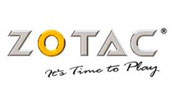 |
|
|
|
|
| Cuisines | Herbal | Spice | Curry | Yeast | Recipe | ||||||
|
Yeast Extract Yeast extract is the common name for various forms of processed yeast products made by extracting the cell contents (removing the cell walls); they are used as food additives or flavorings, or as nutrients for bacterial culture media. They are often used to create savory flavors and umami taste sensations, and can be found in a large variety of packaged food including frozen meals, crackers, junk food, gravy, stock and more. Yeast extracts in liquid form can be dried to a light paste or a dry powder. Glutamic acid in yeast extracts is produced from an acid-base fermentation cycle, only found in some yeasts, typically ones bred for use in baking. Autolyzed yeastAutolyzed yeast (containing the cell walls) or autolyzed yeast extract consists of concentrations of yeast cells that are allowed to die and break up, so that the yeasts’ endogenous digestive enzymes break their proteins down into simpler compounds (amino acids and peptides). Yeast autolysates are used in Vegemite (Australia), Marmite, Promite, Oxo (New Zealand, South Africa, United Kingdom, and Republic of Ireland), Cenovis (Switzerland) and Vitam-R (Germany). Bovril (United Kingdom and Republic of Ireland) switched from beef extract to yeast extract for 2005 and most of 2006, but later switched back. The general method for making yeast extract for food products such as Vegemite and Marmite on a commercial scale is to add sodium chloride (salt) to a suspension of yeast, making the solution hypertonic, which leads to the cells shrivelling up; this triggers autolysis, in which the yeast self-destructs. The dying yeast cells are then heated to complete their breakdown, after which the husks (yeast with thick cell walls) are separated. Removing the cell walls concentrates the flavors and changes the texture. One common commercial use of yeast extract is as a flavor enhancer in processed food products, including vegetarian and vegan foods. Hydrolyzed yeastHydrolyzed yeast or hydrolyzed yeast extract is another version used as a food additive for flavoring purposes. Exogenous enzymes or acids are used to hydrolyze the proteins. ControversyYeast extract contains an amount of naturally occurring Glutamic Acid or Monosodium Glutamate. Although there are medical studies linking Monosodium Glutamate to side effects, others show no or little correlation and it requires E-number labelling in the EU, has excitotoxicity and is associated with obesity and an adverse reaction commonly referred to as "Chinese Restaurant Syndrome", medical opinion remains divided and it is commonly considered only affecting sensitive individuals. Many food producers have replaced Monosodium Glutamate with Yeast Extract which is cheaper, requires no E-number labeling and allows food producers to claim their product is 'all natural' or 'with natural flavorings'. Health proponents claim this is a subversive move by the industry to hide a toxic additive since the MSG contained within the Yeast Extract does not require explicit labeling. Food industry bodies state:
The Mayo Foundation for Medical Education and Research state that there is no known cure for MSG reactions. Affected individuals should avoid foods containing MSG. |











